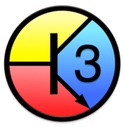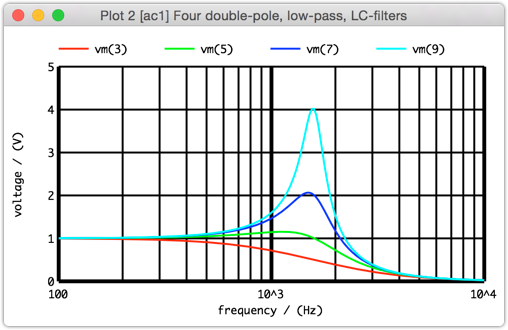Every Now and Then… SPICE

Every now and then I remember all the work I did in college, and at Auburn University with SPICE and MAGIC. These are tools that I just can't ever forget, and all the time I spent on the terminals in the Terminal Rooms in the EE building... well... yes, let's just say they were some very Good Times. And of course, that was a good 30 years ago. Wow. In the subsequent years, MacSpice is around, and it's got all the models, and all the capabilities that the old SPICE had - plus some amazing plotting.
In fact, I'm sure my retina MacBook Pro is probably more powerful than all the computers the EE Dept. had in 1988, and it shows. I can start with this very simple LPF circuit:
Four double-pole, low-pass, LC-filters VIN 1 0 AC 1 * Q = 0.5 R1 1 2 200 L1 2 3 10mH C1 3 0 1uF * Q = 1 R2 1 4 100 L2 4 5 10mH C2 5 0 1uF * Q = 2 R3 1 6 50 L3 6 7 10mH C3 7 0 1uF * Q = 4 R4 1 8 25 L4 8 9 10mH C4 9 0 1uF .AC DEC 100 100hz 10khz .END
and then in the MacSpice console:
MacSpice 1 -> source lpf.ckt
Circuit: Four double-pole, low-pass, LC-filters
MacSpice 2 -> run
On line 2:
vin 1 0 ac 1
Warning: Source 'vin' has no DC value specified, 0V assumed.
MacSpice 3 -> plot vm(3) vm(5) vm(7) vm(9)
and we see:

It really is amazing what these tools can do, and they continue to bring a smile to my face. What a treat.